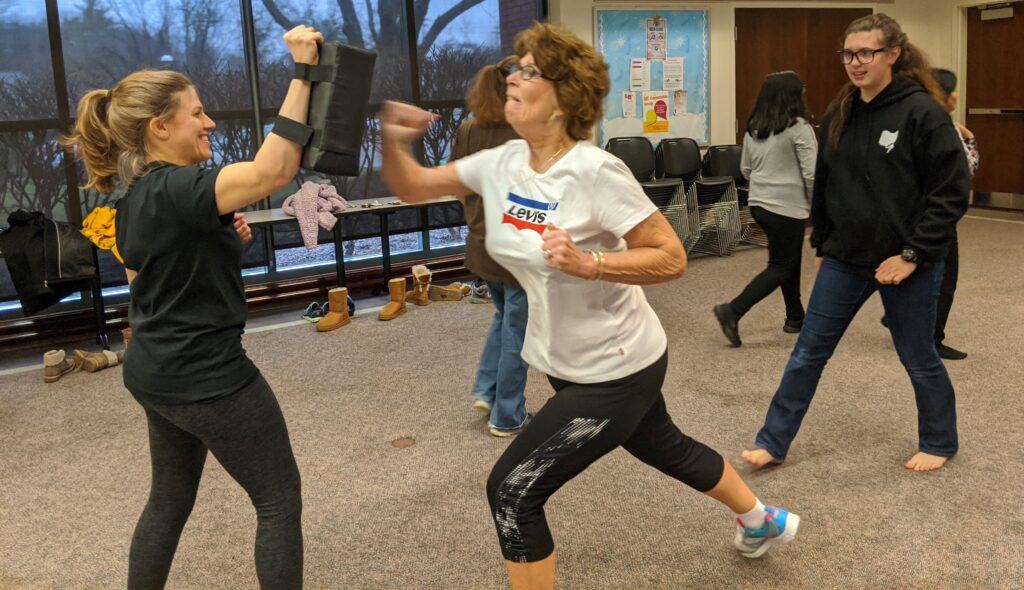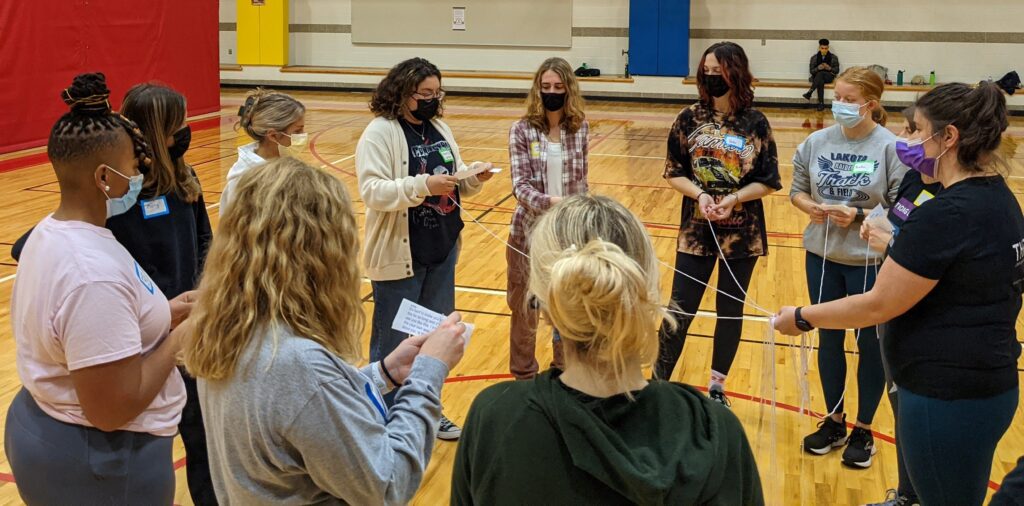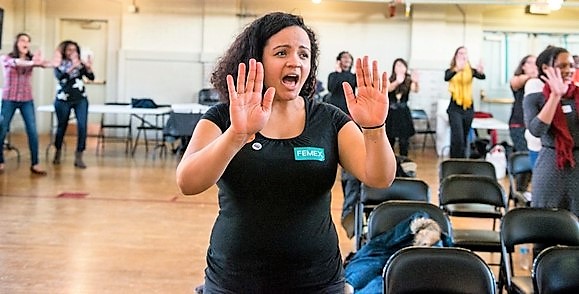
NWMAF-certified instructors are skilled in building awareness, verbal and physical self-defense skills, and tools for healing and growth. NWMAF-certified instructors are knowledgeable about violence against women, LGBTQIA+ people, and other targeted groups. Many have strong backgrounds in advocacy, martial and healing arts, and support empowerment and community change.
The NWMAF is a leader in Empowerment Self-Defense. We offer professional development and certification to empowerment self-defense instructors. From cutting-edge research to best practices in classroom management, from non-profit service to running an effective business, we can help instructors maximize what they deliver to their students.

What is Empowerment Self-Defense?
Empowerment Self-Defense (ESD) teaches practical skillsLink to footnote to those targeted for gender-based violence—primarily women, LGBTQIA+ people, and non-binary people. These skills help people avoid, interrupt, respond to, and heal from interpersonal violence.
We teach those skills in the context of rape culture, addressing the physical, mental, emotional, spiritual, and sociocultural components of advocating for and protecting yourself and others.
ESD is grounded in an understanding of social inequality and social justice, and it addresses the whole spectrum of gender-based violence, from harassment to attack, from microaggressions to trafficking.
ESD is anything we think, say, or do that helps us feel safe, strong, and respected.
Core elements of an ESD program
- We know that trauma survivors are in every room, and we teach with awareness of how trauma affects people.
- We reject victim-blaming and honor anything anyone has done or is doing to survive.
- We focus a lot on harassment, abuse, and assault by people we know, as that’s most common.
- We use and model consent throughout the class
- We focus and build on students’ strengths, not weaknesses
- We teach a toolbox of skills – physical, verbal, emotional—against a range of assaults ranging from irritating to
life-threatening:
- assertive communication skills that can be used to interrupt all levels of violations
- physical techniques that are simple, quick to learn, and easy to remember, and that people of different ages, sizes, and abilities can do
- awareness of trauma responses to reduce self blame and encourage healing and action
- techniques to manage adrenaline and activation under stress
Tools not rules
We know that whatever someone decides to do in each situation, whatever action they do or don’t take, they aren’t at fault. The responsibility lies 100% with the aggressor.
We don’t tell anyone what they should or shouldn’t do. We recognize that there are many ways to defend oneself, and we respect everyone’s decision to get through or survive the best way they can.
credit: Lauren Taylor/Defend Yourself
It Works
The most profound testimony about the transformative power of ESD training is what our students say. They tell us how life-changing ESD training has been for them: they are more able to speak up for themselves, less likely to blame themselves for harassment, abuse, and assault; are more confident and less fearful; know themselves better, trust themselves more, have healthier relationships, and are more able to create the lives they want.
Here’s what the research says.Footnotes
- ESD teaches practical skills: Empowerment Self-Defense Frequently Asked Questions (FAQ), Jocelyn A. Hollander, accessed December 7, 2022.
How to choose a self-defense class
In a good empowerment self-defense program, students learn awareness, assertiveness, and verbal and physical skills. These skills can help defenders prevent, escape, resist, and survive assault, abuse, or harassment.
In choosing a class, look for a program or an instructor who:
Knows the facts about abuse and assault aimed at women, transgender and non binary people, and others targeted for violence and tailors classes to these realities. For example, a good class will address situations involving acquaintances and romantic partners as well as attacks by strangers. For example, a good class will address situations involving acquaintances and romantic partners as well as attacks by strangers.
Knows the realities of the lives of women, transgender and non binary people, and others targeted for violence and is able to work with each student where they are. For example, a good teacher adapts verbal and physical techniques to each student’s strengths and challenges; they will not have a “one-size-fits-all” program.
Respects people’s decisions on how to handle dangerous or threatening situations and does not blame or judge survivors.
Offers techniques, knowledge, and strategies to help students make their own decisions about how to handle situations instead of telling students what they should or should not do.
Takes an empowering approach not only to the practice of self-defense but also to teaching the program. For example, students should be able to determine their own levels of participation in the class, and no one should feel pressured into doing specific exercises.
(Thanks to the National Coalition Against Sexual Assault for some of this material.)

NWMAF-Certified Self-defense Instructors are available in the US and internationally.
Contact Instructors directly for more information on classes and workshops in your area.
